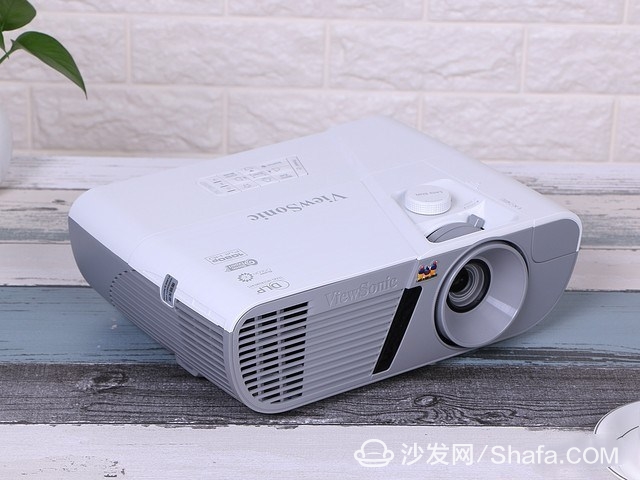
The ViewSonic PX726HD features SuperColorTM Super BrightTM and RGBRGB color wheel and bulb adjustment technology to demonstrate a wider color gamut. ViewSonic also stated that the PX726HD supports the Rec.709 and sRGB color gamut standard range. The specific role of Rec. 709 is to specify the relevant color gamut, resolution, frame rate, and display specifications, making the picture transition natural, for a home projector. This color performance is very meaningful.
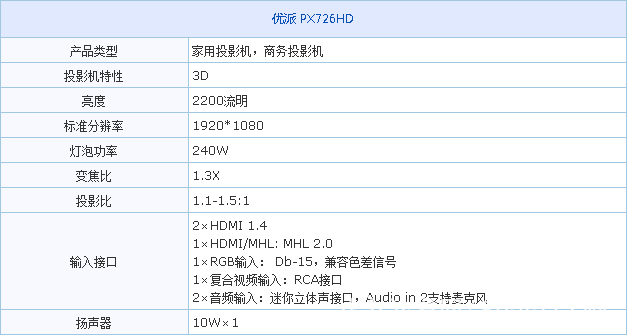
Just knowing the brightness performance is not enough to understand the overall performance of the ViewSonic PX726HD. After all, the highlight of ViewSonic PX726HD is the color, then we will enter the evaluation of ViewSonic PX726HD. ViewSonic PX726HD also supports 1920×1080 high-definition resolution with a nominal brightness of 2200 ANSI lumens and a lens projection ratio of 1.1 to 1.5. It also supports up and down screen displacement and supports keystone correction. After testing, the measured ANSI brightness is 1519 lumens, that is to say in the color optimization mode, the picture has a brightness of 1519 lumens. The peak brightness of the ViewSonic PX726HD reaches 2648 lumens, and the maximum brightness is 2,079 lumens.

Appearance, ViewSonic PX726HD has a white fresh design, keep the streamlined body, simple but elegant. ViewSonic PX726HD is basically a continuation of the design language of ViewSonic's home projector. The large and small diamond design makes the product look more lightweight, and it also makes the ViewSonic PX726HD look more fashionable.

ViewSonic PX726HD adopts white design style fresh
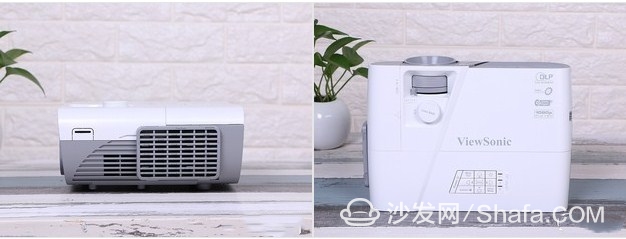
Views and Back Design of ViewSonic PX726HD
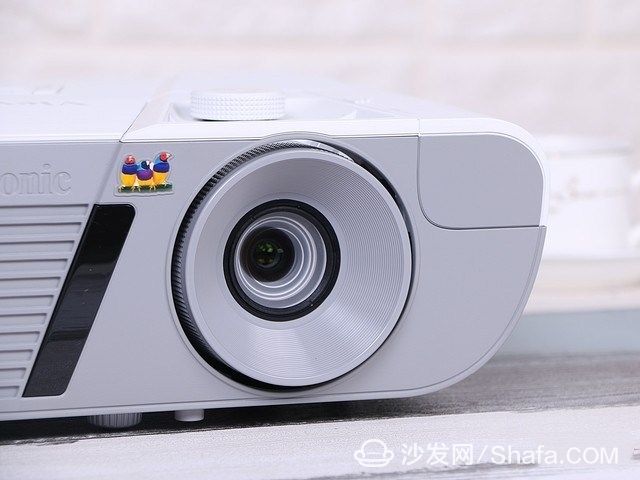
Views of the ViewSonic PX726HD
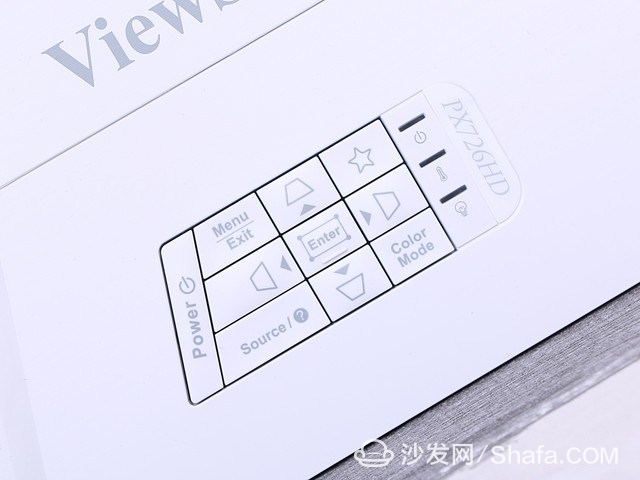
ViewSonic PX726HD button


ViewSonic PX726HD Keystone Correction Function
The rich body interface is also the main features of the ViewSonic PX726HD. ViewSonic PX726HD provides RGB (like VGA) input and output interfaces, S-Video, two HDMI, front/back of infrared receiver, Mini USB and other interfaces, and two audio interfaces for different audio devices, including RCA stereo audio Interface and audio 3.5mm mini stereo interface, can easily connect a variety of different devices.
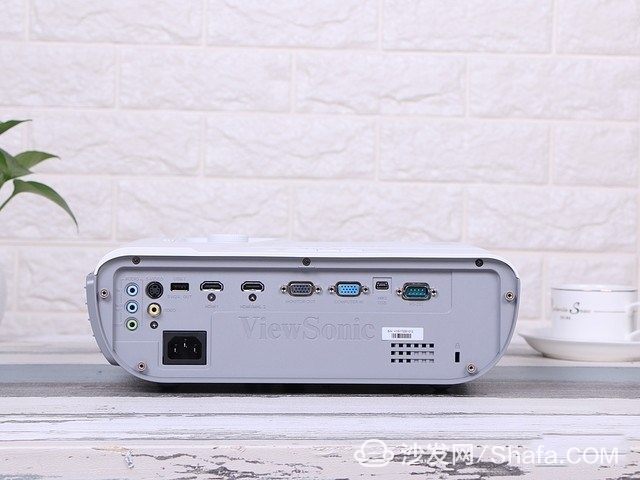
ViewSonic PX726HD interface design
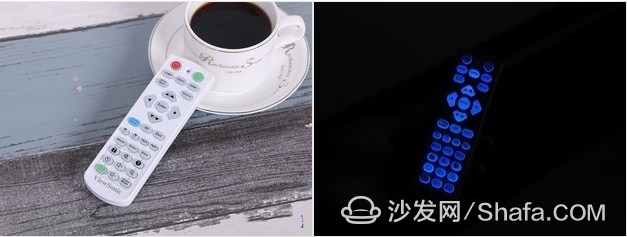
ViewSonic PX726HD Remote Control Backlight
ViewSonic PX726HD's remote control is also a white design, key design is reasonable, use up and learning cost is not high. It is also worth noting that the remote control of ViewSonic PX726HD has a backlight function, as long as you press any one button, you can achieve the blue backlight light, for home projectors often operate in the dark, this feature is also very worthy of recognition.

Original image



Original image

ViewSonic PX726HD Movie (Rec.709) Color Mode
Can be found through real shot, ViewSonic PX726HD sRGB mode color performance is very characteristic, red is more infectious than the original picture, the color of the entire picture is relatively transparent, whether it is distant scenery or near details, color performance There is not much difference between the original picture and the author. I think that this mode can be used to watch movies and can basically appreciate the original color style of the movie.
Then we savor the color of the ViewSonic PX726HD. Color testing is one of the most important test items in the evaluation process of the projector. It mainly examines the color reproduction ability of the projector and the color saturation, lightness, color richness, and color temperature by comparing the test proofs with the color real shot diagrams. The level and so on. Let's take a look at the performance of the ViewSonic PX726HD in terms of color.



Through the above three sets of comparison charts, we can clearly find that the ViewSonic PX726HD's color is very transparent, high color brightness, while color reproduction can also meet the needs of large-scale movie viewing. Especially for the reduction of human skin color, although the performance of ViewSonic PX726HD can not be said to be 100% proofs, but its color is more pleasing to people.

In the comparison of four-color maps, we can see that red, green, yellow, and blue are actually very good. Although it can be seen from this figure, the brightness of the ViewSonic PX726HD is dark in the middle, but the overall accuracy of the restoration The ViewSonic PX726HD doesn't have much to be picky about.
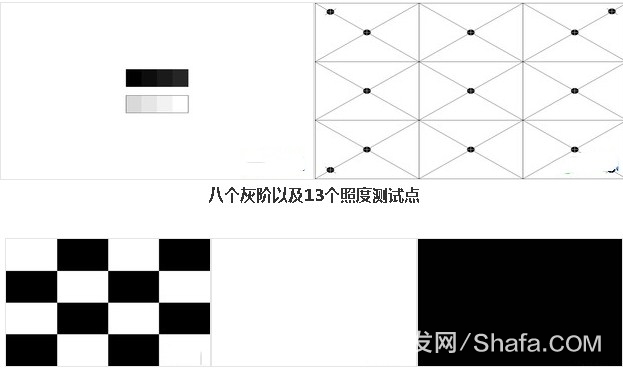
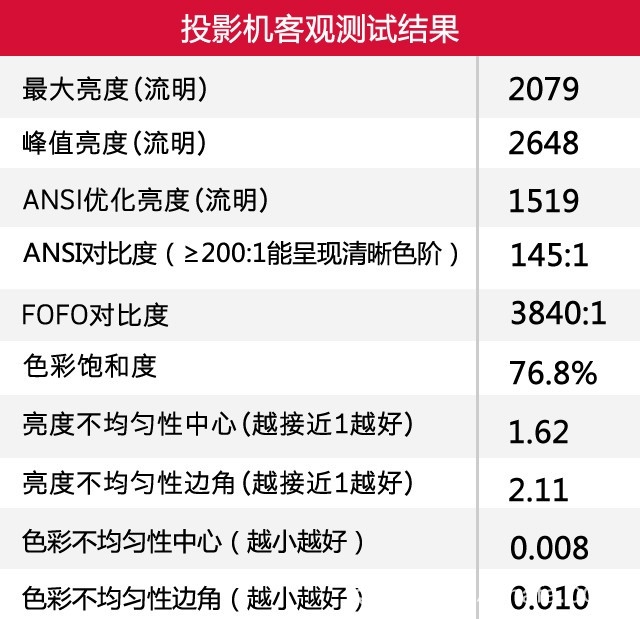
data analysis:
ANSI brightness refers to the average brightness of the 13 test points in the picture when the projector can just distinguish eight black and white blocks. Therefore, ANSI brightness and maximum brightness are more significant for our reference. In general, ANSI measured brightness is qualified if it can reach 60% of the nominal value and 80% is excellent. The measured ANSI brightness of ViewSonic PX726HD is 1519 lumens, which is 69% of the nominal brightness. For a projector that emphasizes color, the ANSI brightness compliance rate is very good, because the color and brightness cannot be taken into account at the same time.

ViewSonic PX726HD real shot map

ViewSonic PX726HD real shot map

ViewSonic PX726HD real shot map

ViewSonic PX726HD real shot map

ViewSonic PX726HD real shot map

ViewSonic PX726HD real shot map

ViewSonic PX726HD real shot map
Smart TV/box information can focus on smart TV information network sofa butler (http://), China's influential TV box and smart TV website, providing information, communication, TV boxes, smart TVs, smart TV software, etc. Answering questions.
Future Bus connectors Description
Future Bus connectors, which use 2mm style have a mating distance of 10mm. Both Future bus and the upgrade Future bus+ are out-dated.No additional work has been done to upgrade the specification over the years. However we still produce products which meet the Physical and Electrical layers of IEE P896.
Antenk future bus connecto feature
designed in metric dirnension on 2 millimeters grid over 5 rows.
1 Standardized product through EIA (USA), IEC and CECC (international).
2 Selected by IEEE as the interconnection system for Futurebus + / SCI / VicBus.
3 Multi-sources product,use for telecommunication, network, server / workstation market.
4 High tempersture materials SMT compatible.
5 Modular design giving flexibility for system design.
6 Stackable end to end without loss of contact position.
7 High density (more than 2 times as compared to the standard inch based " Euroconnector DIN 41612" ).
8 Tuning Fork female contact concept for higher robustness and improved reliability
(low contact resistance and high normal force).
9 Low insertion force design.
10 Inverse connector system (signal and power).
11 Optimized solder and compliant press-fit terminations for backplane and circuit board connectors.
12 differents mating lengths on signal and 3 on power for standard connector system.
Future Bus connectors Application
Telecom backplane board
Antenk offers a complete line of 5+2 and 8+2 Hard Metric Connectors as well as a complete line of 4 and 5 row Future bus Connectors.
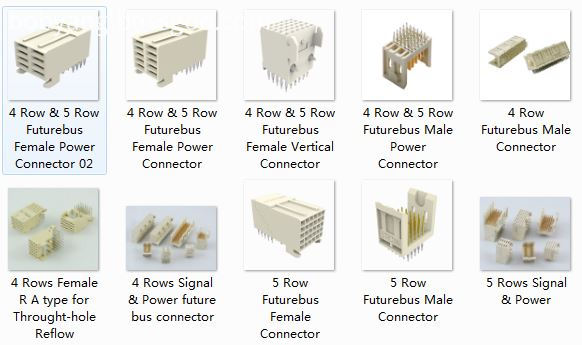
4 and 5 row Future bus Connectors
4 Rows Signal & Power
5 Rows Signal & Power
Female IDC Type 4&5 Rows
Power Connector & Cable
Shroud
Vertical, 5 Rows
Right Aangle, 5 Rows
Vertical, 4 Rows
Right Angle, 4 Rows
5+2 and 8+2 Hard Metric Connectors
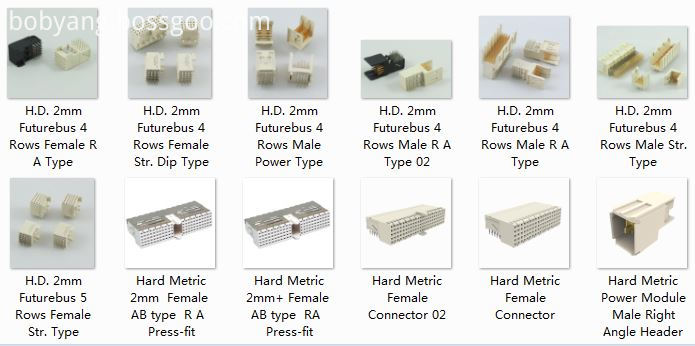
2.0mm Future Bus Connector Male DIP
2.0mm Future Bus Connector Female DIP
2.0mm Future Bus Connector Male Press Fit
2.0mm Future Bus Connector Female Press Fit
2.0mm Future Bus Connector Power Type
2mm HM (hardmetric) Connector Introduction
System designed to meet the current and future needs of instrumentation applications giving excellent electrical and mechanical characteristics. It is a high performance, high density system with flexible configuration which offers upgradeability. The connector system is fully supported by Antenk spice models to guarantee choosing the right product to match the application.
ANTENK 2.0mm HARD METRIC CONNECTOR MODULES comply with international IEC 917and IEC 61076-4-101
standards. The connector systems in telecommunication and other industries require hight density connectors to support
larger amounts of data increasingly higher speeds antenk 2mm hardmetric modules offer the solution
Features and Benefits:
This high density connector modules can be stacked end to end without loss of space.
1,ANTENK developed the 2.0mm series under thorough consideration of impedance match, propagation delay,
cross talk, reflection. It is the ideal connector for digital high speed data application.
2,ANTENK offers differend types with inverted mating configuration. The male connector is a fixed module at the
backplane and the female commector is a free component of the plug-in module. The male connector has 5 signal row.
3 The outer shielding rows z and f of the male connector engage the shielding contacts of the famale connector. theshield
is also designed for gas tight, press-fit installation.
4 The connector system offers 15 contact length that utilize the proven press-fit assembly technique. Within the 15
contact length are 3 mating levels, achievable on both the plug-in and rear I / 0 side.
5 Coding system prevents mix-up and wrong mating between male and female connectors.
6 The 2.0mm hard metric connectors and DIN 41612 connectors can be used on the same PC board as both have the
same mating distance.
7 Staggered make-break pin populations for optional hot-swap capability.
8 Rear pin option for through-the-backplane I/O application.
9 High density PCI capability,shield for EMI/RFI protection.
2mm HM (hardmetric) Connector Features:
High density system with small real estate on backplane and daughtercard
Extensive range of signal, power, coaxial and fibre board-to-board and cable-to-board connections
Modular units give flexible configuration
Special versions for VME64 extensions and CompactPCI
Signal contact rating 1.5a fully energized
Universal power module rated at 7.8A/line, 23.4A fully energized
All lines impedance controlled to 50 (single ended) and 100Ω (differential) nominal
Safe design, complies with IEC950 in mated condition
Universal power module is safe in unmated condition
Several performance levels for board and cable connectors with unshielded and shielded versions
Mismatching keys block mating before any contact touch
Small press fit board hole allows maximum track width and minimum signal corruption
1.4 to 5.6mm (0.055 to 0.220 inch) Backplane thickness range
2mm HM (hardmetric) Connector Applications
Communications & Networking, Computers & Computer Peripherals, Sensing & Instrumentation
Metric Connectors,2.0Mm Hard Metric Connectors,Hard Metric Connectors,Hard Metric Female Connector,2.0mm Future Bus Connector Male DIP,2.0mm Future Bus Connector Female DIP
ShenZhen Antenk Electronics Co,Ltd , https://www.pcbsocket.com
